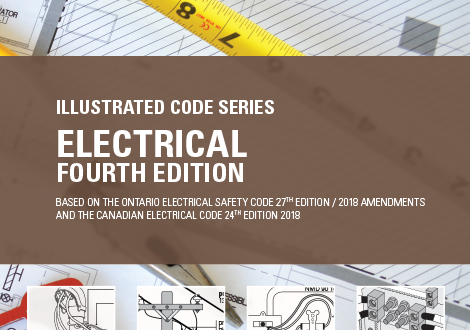Electricians and Electrical Engineers–what’s the difference?
I’ve been asked by many electricians if they’re entitled to write the electrical engineer exam. Some electricians are under the impression they are entitled to a P. Eng. as a result of the combination of their education plus work experience. I’ve probably been asked by just as many engineers if they are able to write the electrician exam to become an RSE based on the same reasoning.
Electrical engineers and electricians can be compared to different sides of the same coin. In simple terms, an engineer assembles the design of the building electrical distribution system using a computer and paper, while the electrician assembles the actual electrical distribution system using tools and machinery.
These are two different occupations- two different perspectives. Let’s take a look at a typical multiple choice question to examine the two different analytical processes of electricians and engineers.

What is the maximum number of threads for ½” rigid conduit?
a) 10.9
b) 14.0
c) 16.3
d) 19.8
So, let’s solve this question by going to Table 40 in the Code
Table 40

First the electrician method:
RTFQ: The question is asking for the maximum number of threads allowed for a ½ inch rigid conduit. The electrician, being a hands-on tools person, reads the headings of the columns and visualizes:
- Column 1 indicates the size of the conduit-this does not answer the question.
- Column 2 indicates the # of threads for every 25.4 mm of thread – this does not answer the question so, answer choice b) is not correct.
- Column 3 indicates the minimum length of thread -this does not answer the question so, answer choice c) is not correct.
- Column 4 indicates the maximum length of thread– this does not answer the question so, answer choice d) is not correct.
Since answer choices b), c) & d) are not correct, that leaves only answer choice a) which must be the correct answer.
Now let’s solve the same question using the engineer method:
RTFQ: The question is asking for the maximum number of threads allowed for trade size ½” rigid conduit. The engineer, being a paper & pencil person, reads the headings of the columns and performs a calculation.
- 14 threads for every 25.4 mm = X threads for maximum length 19.8 mm
- X threads / 19.8 mm = 14 threads / 25.4 mm
- Cross multiply
- X = 14 X 19.8 / 25.4
= 10.9 threads is the maximum number of threads permitted on a ½ rigid conduit
Now, of course, every person is an individual. We’re certainly not talking about every electrician and we’re certainly not talking about every engineer. We’re just generalizing in order to demonstrate how we can better understand electricians and engineers and their roles within the electrical industry.

